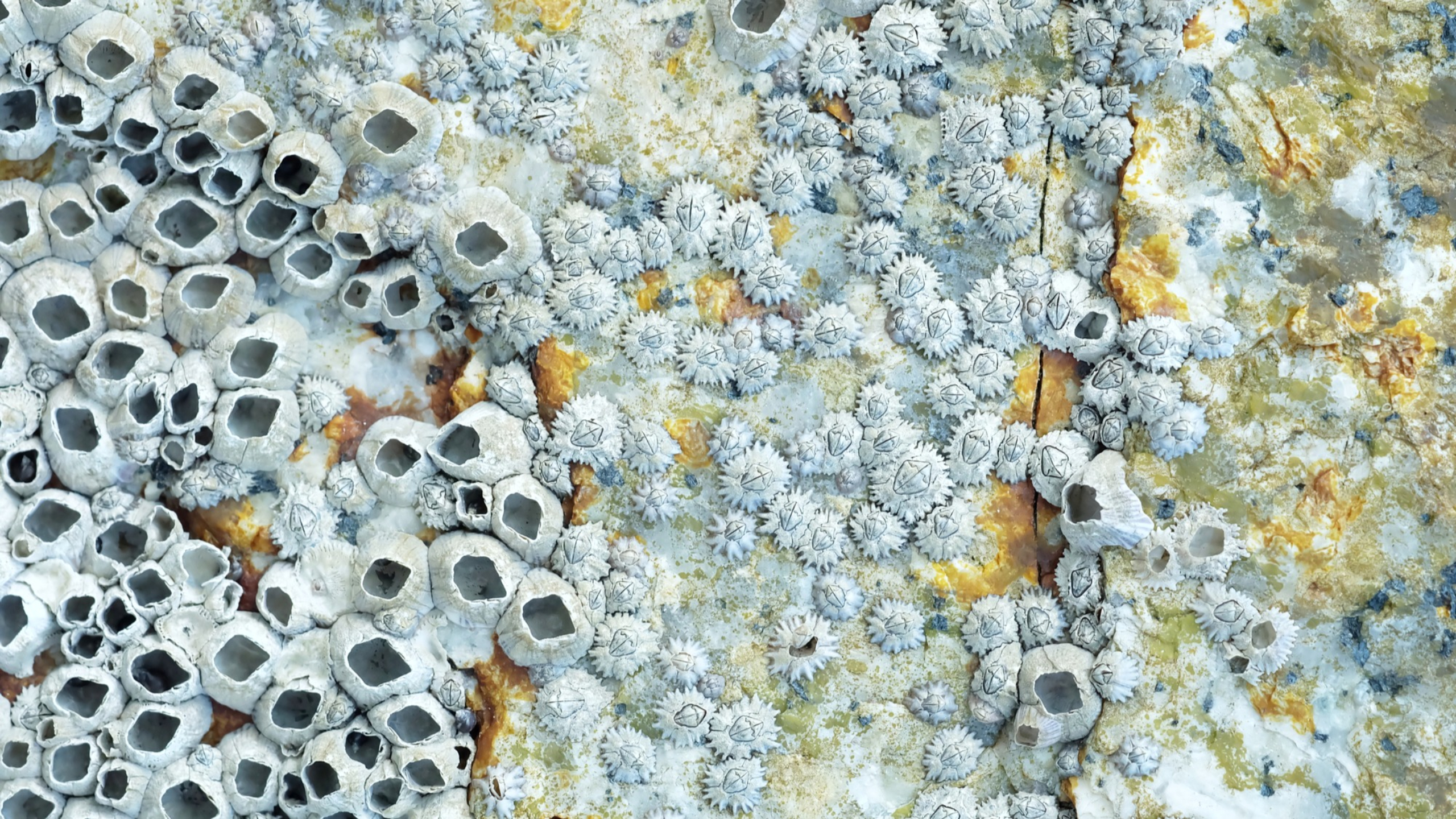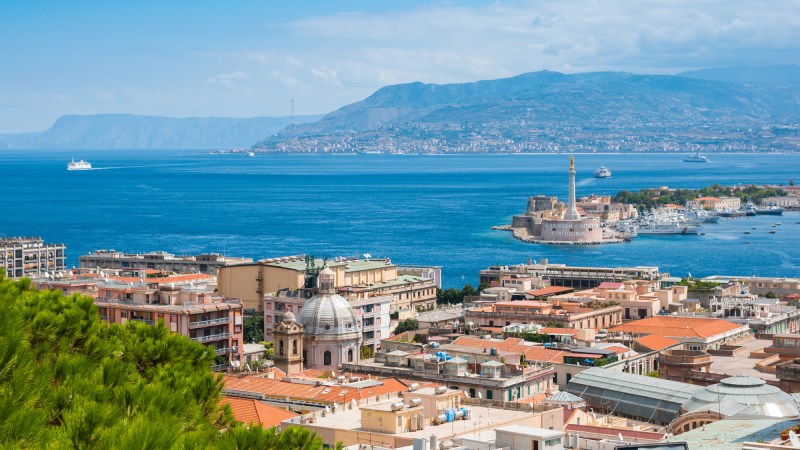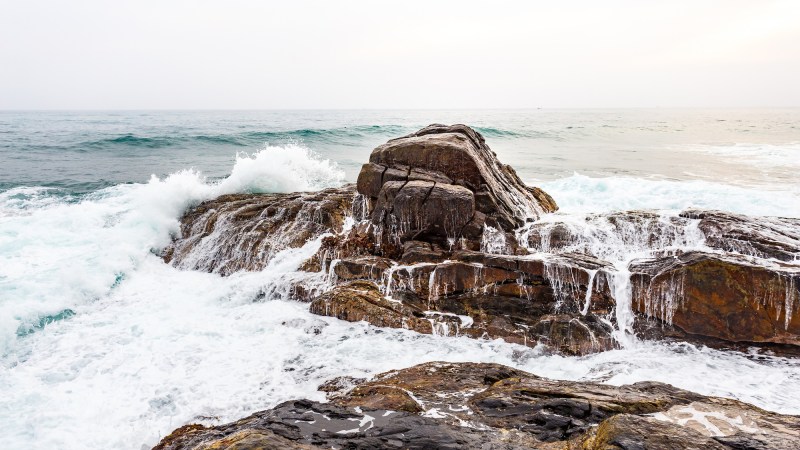

This article was originally featured on Hakai Magazine, an online publication about science and society in coastal ecosystems. Read more stories like this at hakaimagazine.com.
In the late 1700s, King George III glimpsed the future of shipping. Sir Charles Middleton, comptroller of the British Royal Navy, approached the monarch with a vision. His pitch came with a demo—a specially modified model of a warship called the Bellona. The king’s eye soon fell on the shimmering copper plates that encased the miniature ship’s hull below the waterline.
“It was … shall we say, blinged up,” says Simon Stephens, curator of ship models at Royal Museums Greenwich in London, England. When the king heard how the plates could make ships faster, by repelling marine organisms that would otherwise encrust their hulls, he was sold. By the early 1780s, the entire British naval fleet got the bling treatment, too: hundreds of warships were adorned with copper plates mounted like overlapping roof tiles to ease the flow of water across them.
Middleton and his copper plates more or less solved an age-old maritime headache. Since the advent of long-distance sailing, ships that had lengthy stays at sea returned to port with hulls contaminated by barnacles, seaweed, and other marine gunk. This slowed the vessels down—imagine trying to push a slimy, bumpy pineapple through water. Laborers toiled for days or weeks to scrape vessels clean again. But because copper is toxic to many marine organisms, Middleton’s plated ships remained smooth.
Today, copper is still applied to many oceangoing vessels—often as a component in certain characteristically red antifouling paints. As in the 1700s, the copper prevents fouling, leaving a smoother hull that creates less drag. This reduces fuel consumption and lowers carbon emissions. Less fouling also means fewer potentially invasive marine species being ferried around the world.
Yet with new regulations tightening emissions requirements, ship owners are taking hull coatings more seriously than ever before. Behind the scenes, the search for even better, more environmentally friendly solutions is gathering pace.
The challenge is to find effective, sustainable coatings that don’t cost the Earth or leach heavy metals into the ocean. Ship owners must choose carefully. Even a small increase in the roughness of a ship’s hull can have a dramatic effect on emissions, explains Nick Aldred, a marine biologist at the University of Essex in England: “You lose out in a big way by having any barnacles.”
When a ship enters the water, it doesn’t take long for bacteria and phytoplankton to colonize the hull. The microbes create a biofilm that attracts other organisms, and eventually the hull can become caked in barnacles and seaweed, says Maria Salta, a marine biofilm expert at Endures, a company in the Netherlands that studies fouling and corrosion.
So if you own a ship and want to stop this from happening, you have, broadly speaking, two options, says Salta: either a biocide-based coating or a fouling-release coating.
Like Middleton’s copper plates, biocidal coatings kill organisms looking to adhere to the ship’s hull. But it’s possible to push this too far, and the biocidal coating tributyltin (TBT) is a disastrous example of what’s at stake. This potent antifouling coating was used on ships’ hulls for decades, but it poisoned seaways and caused oysters’ shells to thicken so much that the creatures could no longer open their shells to feed. TBT was banned internationally in 2008.
The other option, a fouling-release coating, is like cooking with a nonstick frying pan, says Salta. Organisms generally won’t stick to fouling-release coatings, and if they do, they tend to adhere weakly and drop off when the ship gets underway.
An example is the silicone-based coating Sigmaglide, which PPG Industries has been gradually updating and improving for around 20 years. At one time, the coating was transparent. “It was very difficult to apply; you could not see where you sprayed it,” says Joanna van Helmond, PPG’s global product manager of antifouling and fouling release.
The firm soon added a pigment and tweaked the coating to be less sensitive to temperature and humidity, making it easier to spritz onto hulls in shipyards around the world. In March, the company announced the latest version of this coating. Van Helmond declined to elaborate on how it works, but says the coating reacts with water, aligning at the nanoscale to become extra smooth.
However, Van Helmond did say that in laboratory trials the coating significantly reduced drag. When compared with traditional antifouling coatings, such as PPG’s own biocidal Sigma Ecofleet 290, the company claims its new super sleek coating can reduce a ship’s carbon emissions by up to 35 percent.
Yet fouling-release coatings can be expensive compared with other options. And as Aldred notes, these coatings only work properly when water constantly brushes against the ship’s hull. That makes fouling-release coatings less useful for ships that are static for long periods, such as naval vessels.
Innovations to tackle fouling continue to develop in the footsteps of Middleton’s copper plates, and some of the most cutting-edge efforts to reduce fouling and drag function quite differently from existing coatings.
Take, for instance, the textured covering inspired by sharks that was prototyped by AkzoNobel, a Dutch firm. Rather than trying to make a ship’s hull extremely smooth, it mimicked shark skin’s characteristic roughness, which is naturally drag reducing and antifouling. Such textures have been applied successfully to the bodies of commercial airplanes to reduce drag in the air, though AkzoNobel has yet to report the same success in the water. (The company did not respond to a request for comment.)
Other scientists are looking to use ultrasound or ultraviolet light to deter marine organisms from attaching to hulls. Killing microbes before they get a chance to stick to the vessel could prevent the formation of biofilm onto which barnacles and other stowaways attach. Aldred cautions that these approaches have not been fully evaluated and could come with some unfortunate side effects. “Are we going to be selecting and breeding algae that are resistant to UV, for example? You can imagine all kinds of consequences,” he says.
In their own work, Aldred and his colleagues hope to develop a substance that would actually encourage the formation of a biofilm. But a special kind of biofilm. The team has identified bacteria capable of degrading barnacle glue, he says, which could prevent large marine organisms from colonizing a hull.
“We have a joke in our project that if we ever launched a company to sell this slime, we’d call it boat yogurt,” he explains. “It’s a kind of probiotic for your boat.”
Their research is yet to be published, and Aldred declines to share further details, though he says that, so far, he is happy with the results.
At least royal approval is no longer a requirement. What would King George III have made of boat yogurt?
This article first appeared in Hakai Magazine and is republished here with permission.















